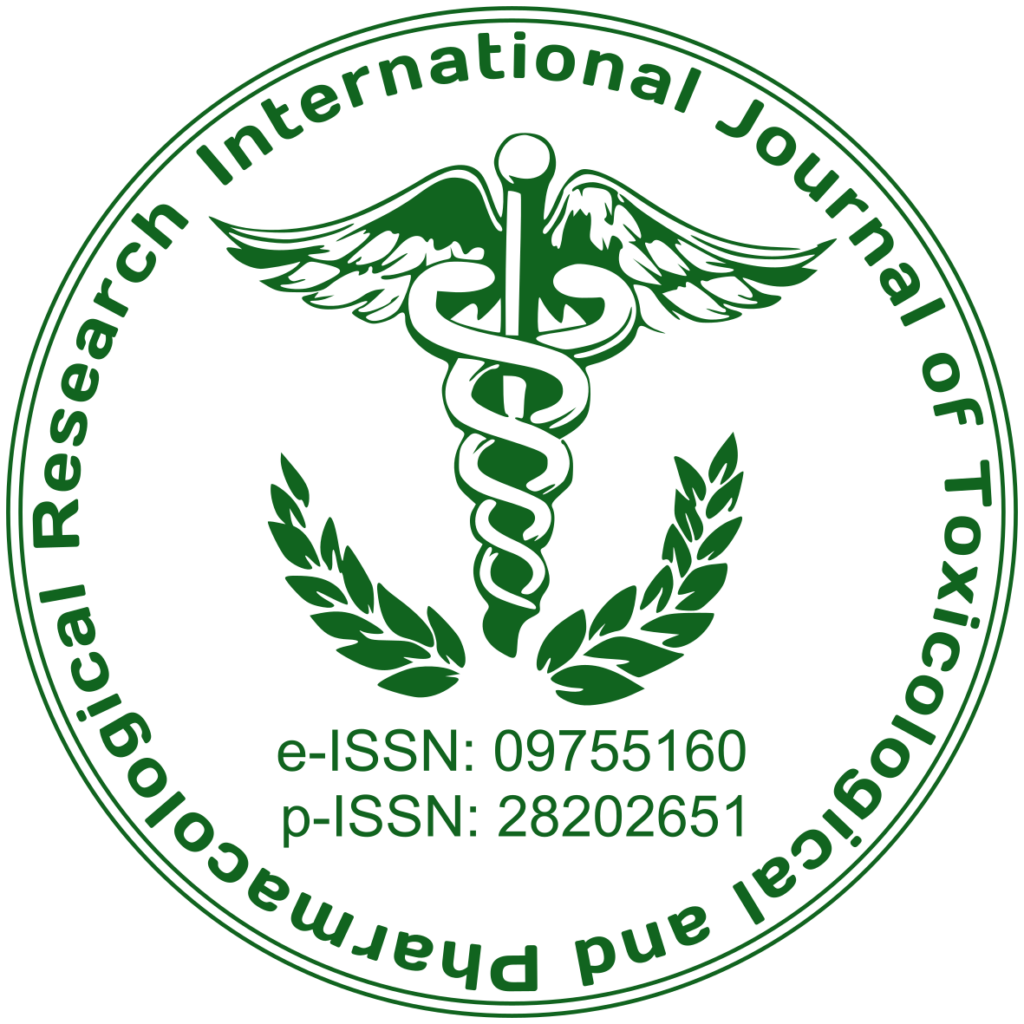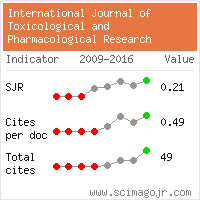1. Review on Traditional Uses, Photochemistry and Medicinal Properties of Jatropha gossypiifolia L.
S. S. Sarangdevot, Bhumika Dadheech
Abstract
Jatropha gossypiifolia L. (Euphorbiaceae), widely known as “bellyache bush,” is a medicinal plant largely used throughout Africa and America. Several human and veterinary uses in traditional medicine are described for different parts and preparations based on this plant. However, critical reviews discussing emphatically its medicinal value are missing. This review aims to provide an up-to-date overview of the traditional uses, as well as the phytochemistry, pharmacology, and toxicity data of J. gossypiifolia species, in view of discussing its medicinal value and potential application in complementary and alternative medicine. Pharmacological studies have demonstrated significant action of different extracts and/or isolated compounds as antidiabetic, antimicrobial, anti-inflammatory, antidiarrheal, antihypertensive, and anticancer agents, among others, supporting some of its popular uses. No clinical trial has been detected to date. Further studies are necessary to assay important folk uses, as well as to find new bioactive molecules with pharmacological relevance based on the popular claims. Toxicological studies associated with phytochemical analysis are important to understand the eventual toxic effects that could reduce its medicinal value. The present review provides insights for future research aiming for both ethnopharmacological validation of its popular use and its exploration as a new source of herbal drugs and/or bioactive natural products.
2. Pre formulation Study of Ozenoxacin: An Analytical and Physicochemical Evaluation
Deepika, Rajendra Pal Singh Rathore
Abstract
Preformulation studies are a crucial phase in the development of any pharmaceutical dosage form, providing essential data about the physicochemical properties of a drug substance. This study focuses on the preformulation analysis of Ozenoxacin, a non-fluorinated quinolone antibiotic used for the topical treatment of impetigo. Various tests, including organoleptic evaluation, UV-visible spectroscopy, FTIR analysis, solubility profiling, and partition coefficient determination, were conducted to assess the drug’s compatibility, stability, and behavior in different environments. The results offer valuable insights for developing an optimized and effective formulation of Ozenoxacin.
3. Evaluation of Anti-Urolithiatic Activity of Hippophae Rhamnoides Linn. Fruits in Rats
Lokesh Kumar Saini, Rakesh Sharma, Surbhi Jangir, Ashutosh Sharma
Abstract
Background: These results suggested that Hippophae rhamnoides fruit extracts possessed nephroprotective properties, which could be beneficial in managing urolithiasis and other renal disorders. The study provided a foundation for further research into the pharmacological applications of this plant in herbal.
Methods: Adult Wistar albino rats were divided into six groups (n=6). Group I served as the normal control, receiving only the vehicle. Group II Ethylene glycol (0.75% v/v) dissolved in their drinking water to induce the formation of kidney stones. Group III was treated with standard drug cystone (100mg/kg) following Ethylene glycol (0.75% v/v) administration. Groups IV, V and VI were pre-treated with ethanolic extract of Hippophae rhamnoides at doses of 200mg/kg, 400mg/kg, and 600mg/kg respectively. Then the biochemical parameter such as Calcium, Oxalate, Magnesium, Phosphate Estimation in Urine And Blood Urea Nitrogen (BUN), Creatinine Estimation in Serum As well As Measurement of Body and Kidney Weight and Histopathological analysis of kidneys.
Result: In this study, the administration of 0.75% (v/v) ethylene glycol aqueous solution to male Wistar albino rats produced hyperoxaluria. Oxalate, calcium, and phosphate excretion were grossly increased in the calculi-induced animals. However, cystone and Hippophae rhamnoides significantly lowered the elevated level of oxalate, calcium, and phosphate in urine when compared to the model control group (p < 0.005).
Conclusion: The finding this study provide compelling evidence that Hippophae rhamnoides (HR) fruit extract exhibits significant antiurolithiatic activity in a well-established model of ethylene glycol-induced urolithiasis in rats.
4. Investigating the Protective Role of Luteolin against Aspirin-Induced Gastric Ulcer: Novel Pharmacological Approach
Nitesh Kumar, Divya Singh, Rakesh Sharma, Ashutosh Sharma
Abstract
Background: Gastric ulcer is a communal gastrointestinal disorder induced by an imbalance between protective as well as detrimental factors.
Methods: This experimental study used 30 Wister albino rats categorized into five groups (n=6/group): Group A:- Normal , given (1% CMC in water), Group B:- Control, given aspirin, 24 hrs before pylorus ligation, Group C:- Standard drug, given ranitidine, 30 mins before pylorus ligation, Group D:- luteolin low dose, given luteolin, 30 min before the pylorus ligation and Group E:- luteolin high dose, given luteolin, 30 min before the pylorus ligation. At the end of the study, rats underwent gastric acidity and gastric lesions measurement. Similarly, the stomach was subjected to histological evaluation.
Results: The study revealed that administering aspirin lead to the progression of gastric ulcers, as evidenced by a notable reduced in the Superoxide Dismutase (SOD), Glutathione (GSH), Catalase (CAT) and Lipid Peroxidation (LPO) in Pyloric Ligation Induced Ulcer. Additionally, it induced a substantial elevation in gastric acidity and decrease in PGE2 and SOD levels. (p<0.05) Luteolin supplementation reversed these changes induced by aspirin.
Conclusion: Luteolin has the potential to be a valuable antiulcer agent, where it could relieve the gastric ulcer caused using aspirin in rats via antiapoptotic, anti-inflammatory, antioxidant, and upregulated PI3K/Akt. Pathway mechanisms.
5. Phytochemical and Pharmacological Evaluation of Crinum Latifolium in Streptozotocin Induced Diabetes in Wistar Rats
Kavita Kumari Mimrot, Rakesh Sharma
Abstract
Background: Leaves and their bioactive constituents are used for the treatment of diabetes mellitus throughout the world; especially in countries where access to the conventional treatment of diabetes mellitus is inadequate. There have been several reports on the hypoglycemic activity of Crinum latifolium (CL). Hence, the present study was undertaken to investigate the anti-diabetic effect of CL leaves extract alone and in combination with an oral hypoglycemic drug, Glibenclamide on Streptozotocin induced diabetic rat models.
Methods: Streptozotocin (45mg/kg, I.P) was used to induce diabetes in albino rats weighing 200- 250 g. The fasted diabetic rats were divided in to 6 groups of 6 animals each. Group I served as the normal control, receiving only the vehicle. Group II Streptozotocin (45mg/kg, I.P) was used to induce diabetes. Group III was treated with standard drug Glibenclamide (10mg/kg) administration. Groups IV, V and VI were pre-treated with ethanolic extract of Crinum latifolium at doses of 100mg/kg, 200mg/kg, and 400mg/kg respectively. Biochemical parameter Such as serum was analyzed for total cholesterol (TC), triglycerides (TG), high density lipoproteins (HDL), low density lipoproteins (LDL) and very low density lipoproteins (VLDL).
Result: The fasting blood glucose levels will be determined on day 0, 7, 14, 21 and 28
th day by using glucometer. Data were statistically analyzed by t-Test followed by Dunnet’s multiple comparison test. All the test groups showed significant (P < 0.05) decreased fasting blood glucose levels in Streptozotocin induced diabetic rats treated with the aqueous extract of CL. However, the Combination of CL extract with Glibenclamide produced a significant (P<0.05) decrease in blood glucose level which is higher than that produced by Glibenclamide alone. The decrease in blood glucose levels is probably due to reduction in the intestinal absorption of glucose.
Conclusion: CL possesses significant hypoglycemic activity probably due to presence of flavonoids, tannins, steroids and trepenoids and the aqueous extract of leaves contain higher levels of phenol and flavonoids which exhibit greater antioxidant activity by lowering the diabetic complication.

